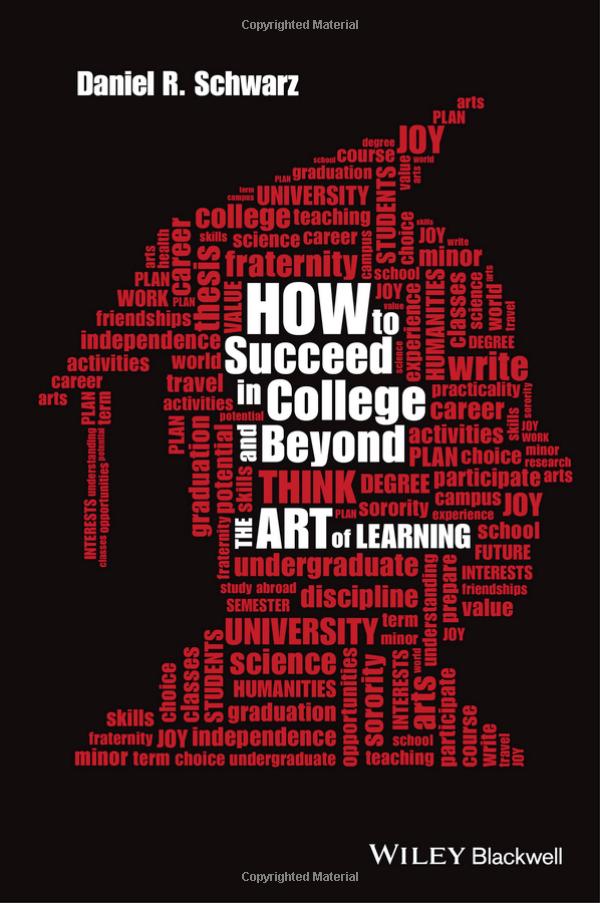
|
Written by a professor of English at Cornell University with decades of teaching experience and based on the input of many students and colleagues, this book serves as an authoritative and well-research resource on how to succeed as an undergraduate student. The book consists of five parts. Of special interest to students studying in Hong Kong are parts II and III, titled “The College Experience” and “Further Essentials”. Part II offers designated chapters with suggestions for each of the four years of an undergraduate degree, plus an extra chapter with suggestions for graduating students.
A selection of interesting titbits of advice are: “no time period is too short to accomplish something”; “[f]ind a few comfortable and quiet study places on campus, places where you work effectively and are not easily distracted”; “[even if you] feel [...] desperate to make friends quickly[,] it is important to retain your core values and judgment and to avoid becoming part of a herd”; “[d]evelop leadership skills [...]; belong to groups in which your initiative matters”; and “you usually can’t fix the past[,] [b]ut you can start from where you are”. Such pithy lines are generally boldfaced in the book, making it suitable for casual browsing.
|
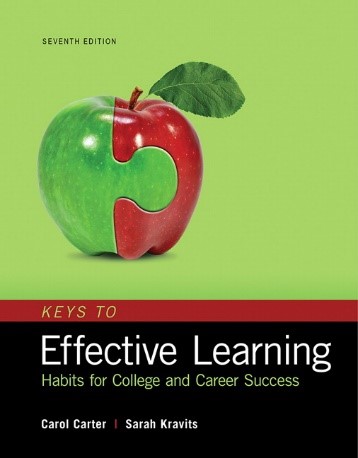
|
Aimed at fostering university students’ self-learning skills and habits, this book expounds on habits of success – persisting, anticipating, communicating, imagining, inquiring, contributing, listening, and perceiving. Featuring inspiring case studies and self-reflection exercises, this book will help you progress towards academic success via accountability, teamwork, and critical thinking.
Highlights include “Critical and Creative Thinking” (ch. 5), “Reading Across the Disciplines” (ch. 7), and “Memory” (ch. 9).
|
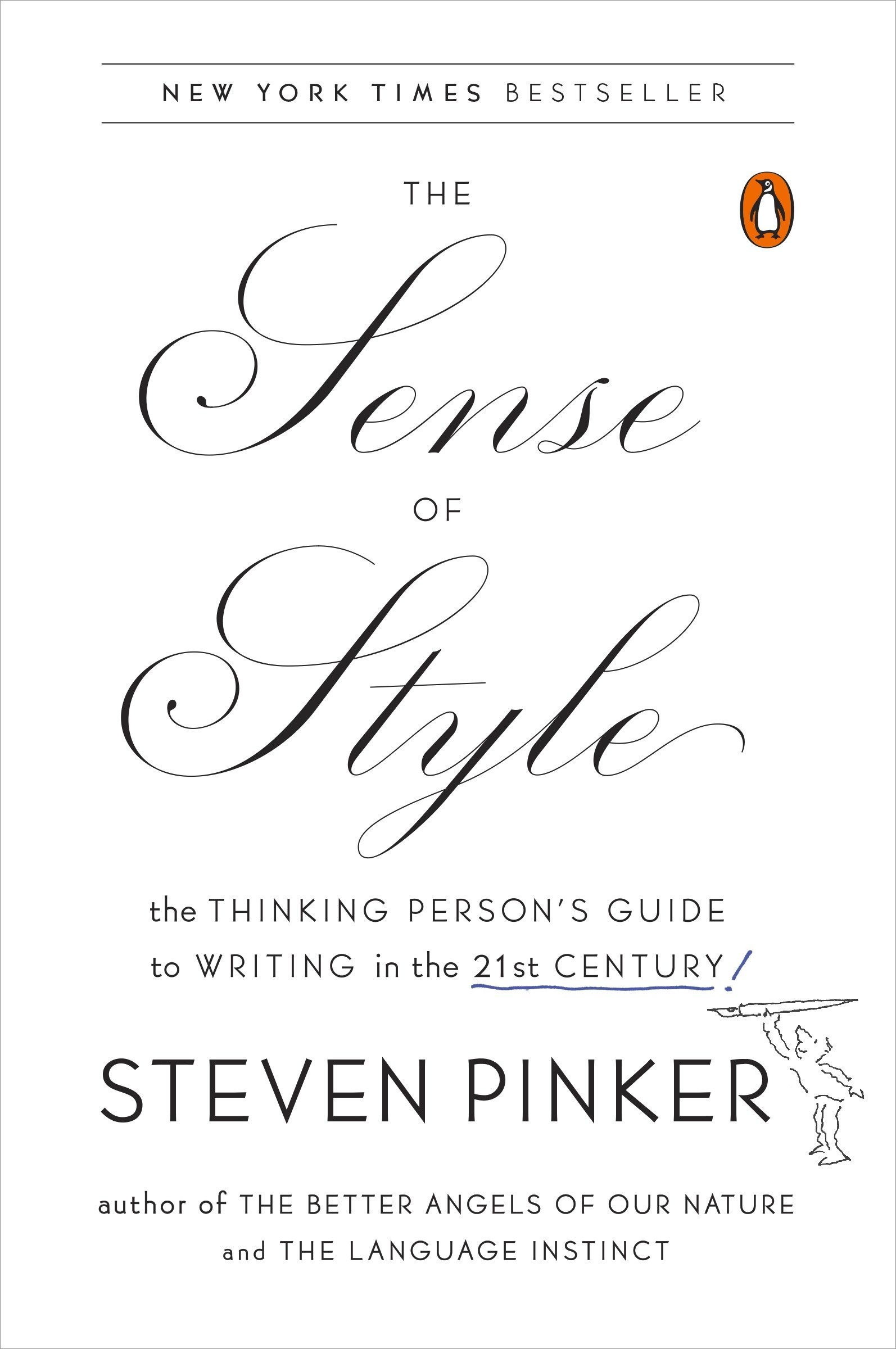
|
This book by renowned psychologist Steven Pinker is a linguistically informed reaction to style guides such as The Elements of Style by Strunk and White, which has been unjustly venerated for many decades.
Topics covered include the purpose of punctuation, how to write unambiguous sentences, and how to write coherently, to enumerate just a few. The author also debunks a number of common myths, such as the prescription against split infinitives.
The pieces of advice that are brilliant are too numerous to enumerate. Here is a selection: use signpost language sparingly; revisit your writing “after some time has passed”; the optimal number of connectives depends on the expertise of the reader; look things up.
|
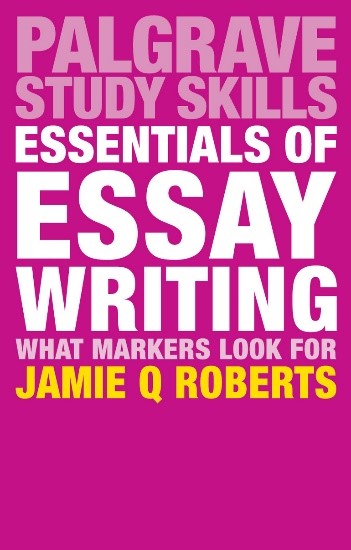
|
This book provides comprehensive guidance on how to write an academic essay. Beginning with an overview of academic essays, chapters 2 to 4 teach how to effectively review literature, which helps with the development of arguments. Chapters 5 to 7 delineate the main linguistic features of academic writing. Chapters 8 and 11 explain how to write introductions and conclusions, while chapters 9 and 10 focus on body paragraphs. In the final chapter, the reader learns how to distinguish a strong essay from a weak one.
Highlights include “Critical Thinking” (ch. 2), “How Others’ Work Can Help You Develop Your Arguments” (ch. 4), and “Different Body Paragraph Structures” (ch. 10).
|
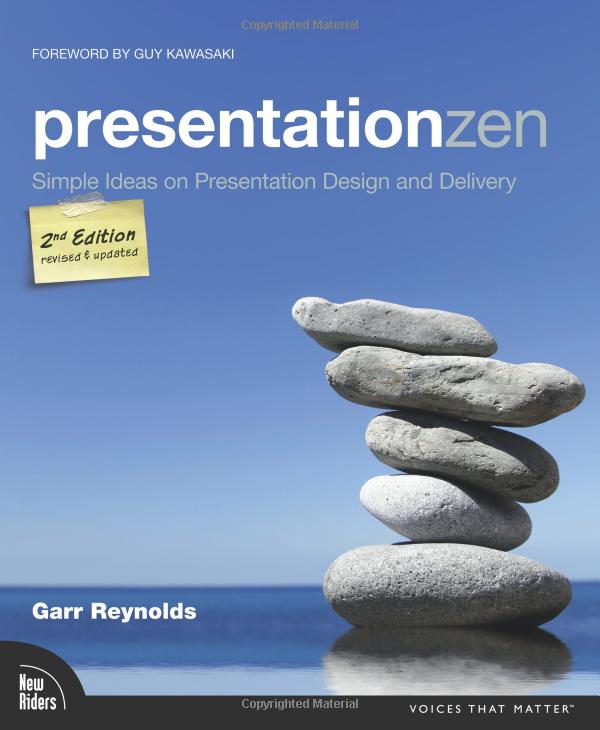
|
This book situates itself in today’s world of PowerPoint, which has become an essential presentation tool. Like the title suggests, it focuses on simplicity. Unsurprisingly this book is full of nice visuals and written in an inspirational style.
While the reader can simply use this book as a repository of ideas, there are many pieces of practical advice: Handouts are useful, but don’t hand out copies of your slides (p. 68). There are three parts you can prepare: the slides for the audience, a set of notes only for yourself, and a handout to be kept by the audience members (p. 69). Create a story using core principles such as simplicity, surprise, and specificity (pp. 79-80).
The critical reader will be pleased to read the discussions of 3D effects (p. 140), logos (p. 141), and bullet points (pp. 142-143). Also interesting are the topics of quotes (p. 153), text within images (pp. 154-157), balance (pp. 166-168), contrast (pp. 173-174), and repetition (pp. 175-176). The book finishes up with material about connecting with the audience (pp. 215-279) and is thus bound to be useful at every stage of preparation for a presentation.
|
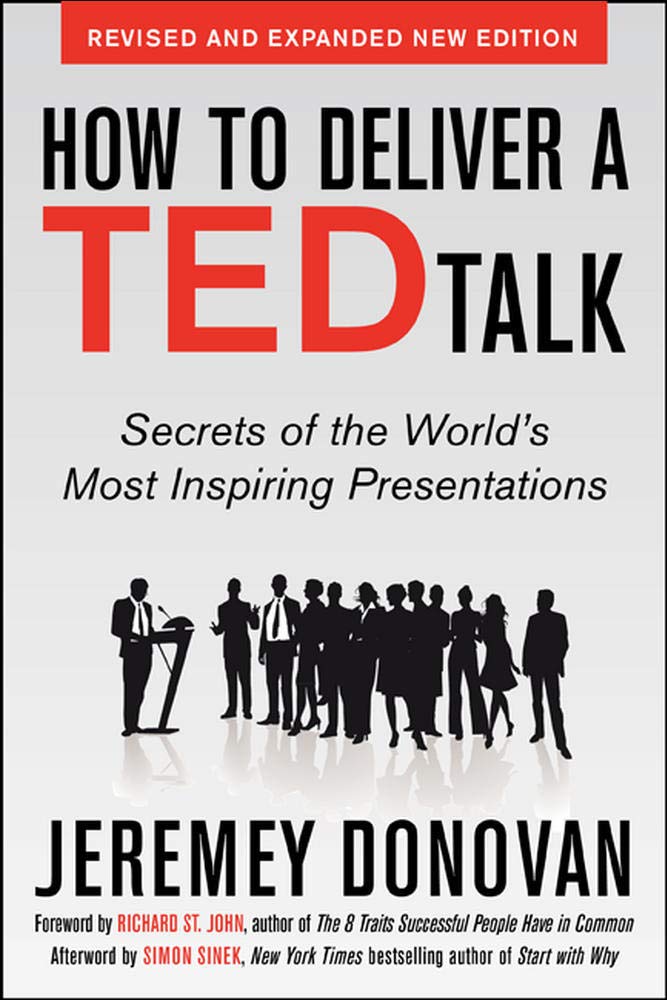
|
This book explains oral presentations in terms of their content, delivery, and design. A presenter of a TED talk is required to speak for 18 minutes or less on a topic. This guide contains many useful tips for engaging, impressing, and captivating an audience. By providing a range of verbal and non-verbal communication skills, this book teaches plenty of techniques for delivering presentations that are both inspiring and entertaining.
Highlights include “Enhancing Your Language” (ch. 9), “Mastering Your Verbal Delivery” (ch. 11), “Managing Your Nonverbal Delivery” (ch. 12), and “Creating Inspiring Slides” (ch. 14).
|